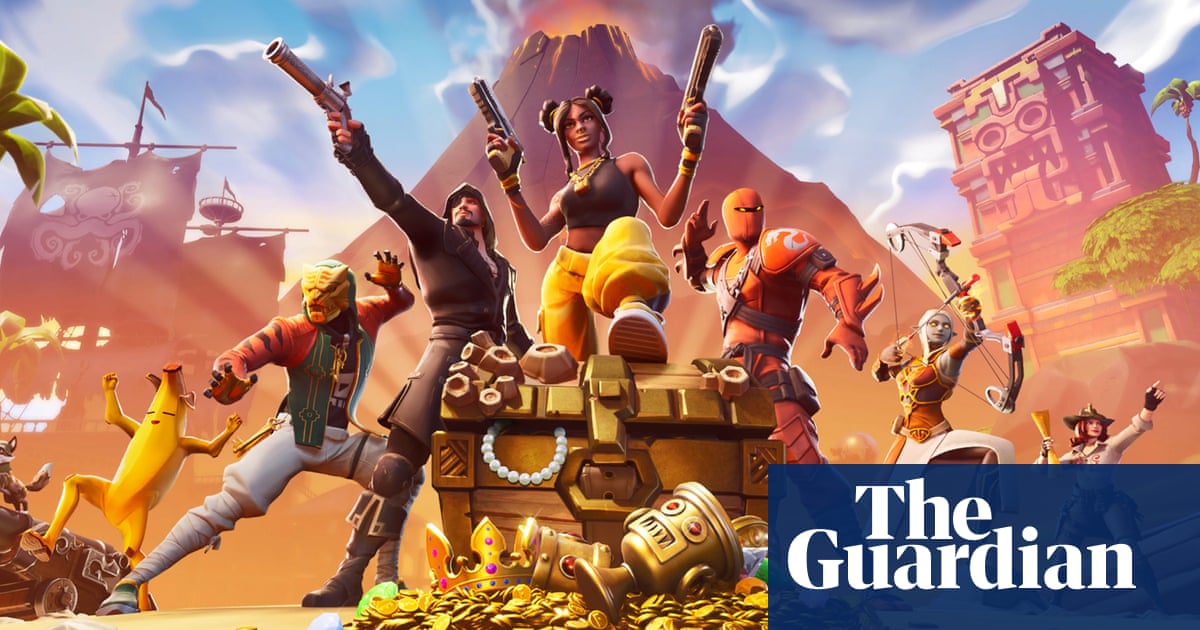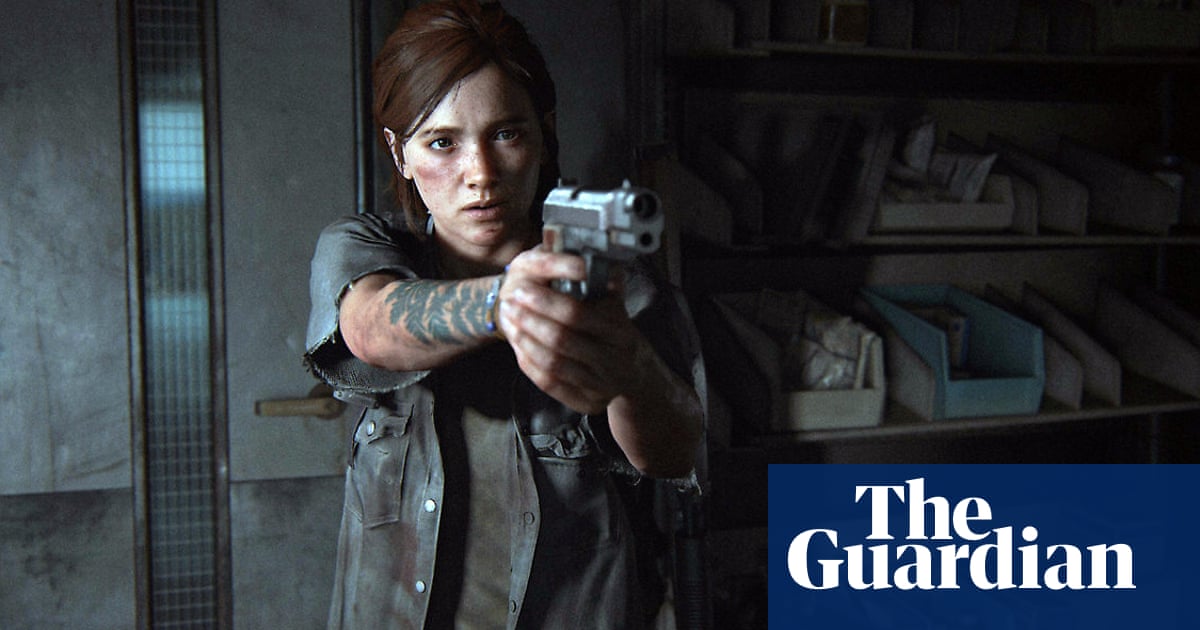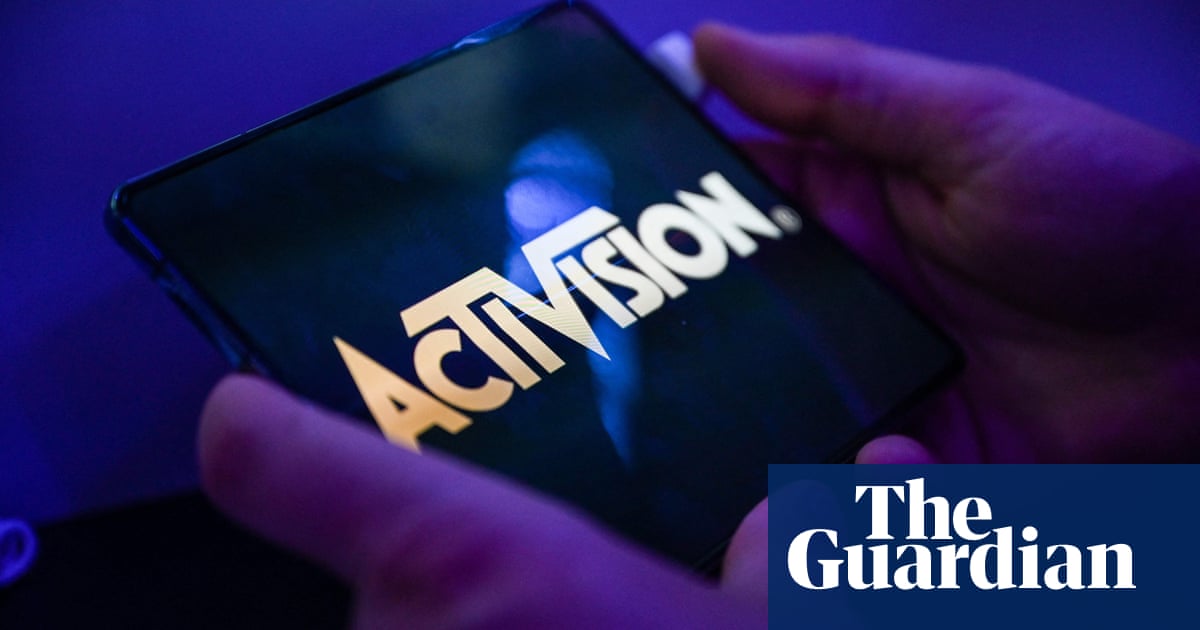
Over the weekend, almost 45 million people returned to Fortnite. The beginning of the battle royale shooter’s’s “OG” event saw the map restored to its 2018 state, back before the entire in-game island was memorably sucked into a black hole. Those people played for a combined 102m hours in a single day, an all-time record, according to developer Epic Games. Not bad for a game that has been available for more than six years, and been a topic of playground conversation for half a decade.
Firstly: 44.7 million people! That’s 10 times the number who watched the premiere of The Last of Us, and more people than have ever bought a copy of To Kill a Mockingbird. It’s reductive to look at video games purely through the lens of player numbers and revenue – to me it’s the least interesting thing about them – but heck, what a number.
More importantly: Fortnite’s event shows us something interesting about how gen Z are experiencing the games of their childhood. Nostalgia has always been big business in entertainment, and has massively taken off in video games in the last decade or so as the first generations of gamers enter their 40s and 50s. But where I can hit up eBay for a yellowed old Dreamcast and a game I vaguely remember from my teen years, the games of gen Z’s childhood are both still with us and entirely gone. If you are 17, you may have been playing Fortnite since you were 12. But the game now is significantly different to the game you played then, and the version you remember no longer exists.
“Forever games” such as Fortnite change and evolve, so characters, weapons, sounds, sights, even the very geography of them slowly morph and disappear, and you can’t get it back. Until last weekend, you couldn’t take a nostalgic stroll around the notoriously deadly and populous Tilted Towers zone of the original Fortnite map. You could see it in old YouTube videos, but it was otherwise gone.
It’s the same with Minecraft, another wildly popular and culturally significant game for gen Z, one that has been going in some form since 2009. You cannot play the version of Minecraft you fell in love with when you were 10. The game now has underwater cities, totally different enemies, enchantments, all kinds of unfamiliar things.
No wonder Fortnite’s throwback month has attracted such enormous numbers. A lot of these players are revisiting a place (and a time) that was super-important to them, which was otherwise lost. Developers speed ahead, games transform with the times, improvements (controversial and otherwise) are made, and sometimes, millions of players are left feeling as if they lost something.
There’s a precedent for monetising people’s nostalgic affection for live-service games. World of Warcraft Classic is an official version of one of the oldest multiplayer online RPGs, World of Warcraft, frozen in time around 2007. The changes to the game world that have happened since then are rolled back, and people can exist in the version of WoW that lives in their memories, before developers made adjustments they hated. It has an estimated one million daily players, and its developers at Blizzard have carefully reintroduced expansions and additional content for it just as they did in the 00s.
When people flock back to these games, they’re yearning not just for an old game, but for a simpler time. This restores Fortnite to what it was before the pandemic, before it started hosting enormous live Travis Scott and Ariana Grande concerts, before it became something you’d see mentioned as synonymous with “video games” on the news.
Fortnite OG goes on for another month, and will run through the greatest hits of its early seasons. After that, Fortnite-as-was will be gone, again – unless Epic decides at some point to make this permanent, and allow players to visit the past whenever they want.
What to play
Despite my lifelong aversion to horror, I cannot stop thinking about Alan Wake 2. It’s giving me nightmares, but I still don’t want to stop playing it. It manifests writer’s block and self-doubt as a hellish alternate universe from which it is almost impossible to escape, and does darkly playful, unsettling things with the concept of fiction bleeding into reality.
Two protagonists, struggling writer Alan and detective Saga Anderson, trade starring roles in this Lynchian detective horror, in which every hour is different from the last. It just keeps doing things I haven’t seen in games before – like segueing into uncanny live-action filmed sequences and back out again. It’s so tense that it makes me feel a little queasy, with occasional but visceral combat encounters that leave me shaking.
If that all sounds a bit much: it is! I turned the difficulty right down after a few hours because it was frightening me so much. But it’s also so interesting and ambitious, pulling off ideas that developer Remedy has tried before, but never nailed until now.
Available on: PC, PlayStation 5, Xbox Series X/S
Estimated playtime: 16-20 hours
What to read
Bloomberg’s Jason Schreier broke the news overnight that Rockstar plans to officially announce Grand Theft Auto VI as soon as this week, with a trailer coming in December to mark the company’s 25th anniversary. Hours of content was of course leaked by hackers last year, but regardless this will be the highlight of the gaming year for millions.
In even wilder announcements, Nintendo says a Legend of Zelda movie is in the works. Our Miranda Boseley had a crack at a potential cast – Zendaya as the titular princess and Jason Momoa as Ganon seem like great early bets. But can it possibly be as good as this Japanese advert from the 90s?
Adele’s son is a big fan of vaguely Randian survival game Rust, apparently – the singer had to conjure a Halloween costume based on the game from nothing, she told an audience in Las Vegas.
Guardian games contributor Lewis Packwood’s new book Curious Video Game Machines, is a compendium of rare and unusual games consoles and coin-ops, and includes stories about such strange oddities as the Time Traveler, a holographic arcade machine.
It’s been almost as horrible a year for the video games media, so it is a delight to report on the launch of a new games site, Aftermath, from an excellent group of ex-Kotaku, Washington Post and Vice writers and reporters.Aftermath is reader-supported and ad-free, and you can check it out here.
What to click
No, Tom Holland shouldn’t play Link: what’s your dream cast for The Legend of Zelda film?
The secrets behind how Pokémon cards are made – from clay carvings to gruelling playtests
Power up: will Chinese financing be the saviour of the Japanese video game industry?
Frog Detective: The Entire Mystery review – whimsical whodunnits
Jusant review – a skyscraping climbing game with the gift of perspective
Thirsty Suitors review – emotional combat that’s equal parts funny, horny and heartfelt
Question Block
Following last week’s issue about gaming with kids, reader Tom has a question that many parents are likely to be asking in the run-up to Christmas:
“Our eldest has a Nintendo Switch, but our two youngest are looking on with jealousy and are keen to play games of their own – a hobby I am desperate to support. Can three people (with additional controllers) really share a Switch? Or, as with Game Boys when I was younger, would each child actually benefit from having their own (trading the cost for some festive peace and quiet)? Can they share digital downloads or would they need to trade cartridges, like the 90s?”
A Switch is shareable, technically, with three controllers, but if your kids are going to be playing any single-player games like Pokémon or Zelda, you’ll run into issues. Your two options are: policing whose turn it is and how long they’re allowed on the console, as Switch parental controls won’t help you here; or, buy more Switches. If you already have one “proper” Switch that can be docked and played on the TV for family game time, then I’d suggest getting handheld-only Switch Lite consoles if you decide to purchase more, as they’re cheaper. The Switch online service does support cloud savegame sharing, but sharing digital downloads is, sadly, a massive pain on Nintendo consoles, so shared cartridges are the way to go.












